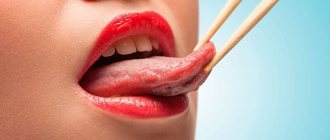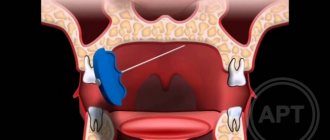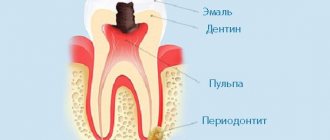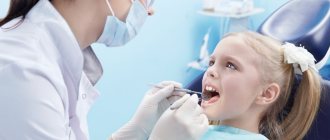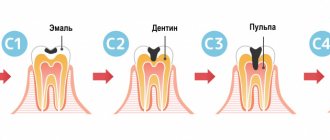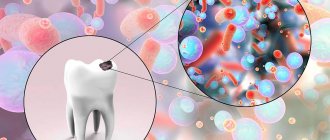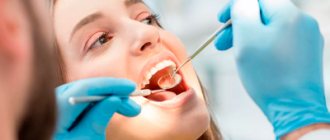If something hurts somewhere, you should not endure the pain, but go to the doctor. If your neck hurts, radiates under your jaw, and in general the pain causes serious discomfort, then you can contact one of these specialists - a surgeon, neurologist
, dentist,
otolaryngologist
- or make an appointment with
a therapist
, who will refer you to the right doctor. An accurate diagnosis cannot be made based on the location and nature of the pain alone. Additional examinations may be required to help find the right solution and relieve you of painful discomfort. Pain in the neck and jaw occurs for a number of reasons, which can be divided into mechanical effects and acquired diseases and pathologies. If such pain accompanies you constantly, then it cannot be ignored. The lack of well-chosen treatment can result in a whole list of unpleasant consequences.
Why does pain occur in the lower jaw?
Purulent diseases
The cause of pain is inflammation of the bone, periosteum or nearby soft tissue. In 70-80% of cases the disease is of odontogenic origin. Less commonly, the process is provoked by acute infections and jaw injuries. Complemented by edema, hyperemia, general condition disorder, intoxication syndrome, regional lymphadenitis. Pain is observed in the following pathologies:
- Periostitis.
The symptom is more pronounced in acute purulent periostitis. The pain is sharp, pressing or boring, radiating to the eye, ear, temple, neck. Intensifies when opening the mouth. Weakness, low-grade fever, and swelling of the cheeks are noted. In chronic periostitis, the pain is periodic, moderate or mild, pressing or bursting. The contours of the face are slightly changed. - Osteomyelitis.
Characterized by a sudden manifestation with a rapid rise in temperature to febrile levels, chills, and severe intoxication. The pain is shooting, pulsating, diffuse, radiating to the neck and half of the face. They get worse when swallowing, limiting mouth opening. The teeth are mobile, pus is released from the gums. The oral mucosa and skin of the chin become numb. In chronic osteomyelitis, the symptom increases after closure of the fistula, decreases or disappears after the outflow of pus resumes. - Perimaxillary abscess.
The formation of an abscess is preceded by toothache. Then dense swelling occurs. The pain quickly intensifies, and the symptoms of intoxication increase. The patient refuses food. After spontaneous opening, the manifestations disappear; in the absence of treatment, chronicity with periodic exacerbations, resumption of pain and suppuration is more often observed. - Perimaxillary phlegmon.
Typically acute onset with rapid progression of local manifestations, purulent-resorptive fever. The pain is jerking, aggravated by talking, chewing, and moving the lower jaw, and is complemented by increased salivation and the formation of a diffuse infiltrate with a fluctuation zone. The condition continues to deteriorate due to severe intoxication.
Traumatic injuries
Injuries to the lower jaw most often result from fights. Damage due to falls, car accidents, or industrial accidents is possible. In case of a bruise, the asymmetry of the face is caused by swelling of the soft tissues; the closure of the teeth is normal. The symptom is moderate, quickly decreases, and does not create serious obstacles to articulation or food intake.
Among the fractures, injuries to the body predominate; violations of the integrity of the angle and branches are less common. Half of the fractures are bilateral. At the time of injury, a sharp explosive pain occurs, decreasing only slightly over time, intensifying when talking, biting, or chewing. Possible numbness of the chin and lower lip. Facial asymmetry, articulation disorders, stepped dentition, mobility, and sometimes tooth dislocations are noted.
Fractures of the alveolar process of the lower jaw are less common than the upper jaw; they develop from impacts, falls from a height, etc. They are accompanied by intense spontaneous pain, which intensifies when swallowing or attempting to close teeth. The mouth is half-open, and the protruding edge of a bone fragment can be seen under the mucosa. The bite is broken, the teeth are mobile, dislocations are possible.
Pain in the lower jaw
Neuralgia
The symptom is accompanied by trigeminal neuralgia involving the 3rd branch (n.mandibularis). It is provoked by external factors (shaving, cold air, water), stress on the masticatory muscles. Prosopalgia is paroxysmal in nature and is a series of pain impulses that are felt like a lumbago or electric shock from the side of the face along the lower jaw to the chin. The pain is sudden, lasts several minutes, reaches such intensity that the patient freezes, does not move, does not speak.
With neuralgia of the glossopharyngeal nerve, the pain impulse is caused by chewing, swallowing, talking, lasts from several seconds to 3 minutes, occurs at the root of the tongue, spreads through the tonsils, palate, pharynx, ear. Radiating pain in the lower jaw. In patients with ganglionitis of the submandibular node, the pain is paroxysmal, burning, boring, pulsating. Lasts from 1 minute to 1 hour. They begin in the tongue, spread to the lower jaw, temple, back of the head, neck, and shoulder girdle.
Muscle damage
Bruxism is formed due to spasm of the masticatory muscles. After night attacks, patients are bothered by pain in the jaws, caused by clenching and intense movements relative to each other. Muscle pain, dental pain, headaches, dizziness, and drowsiness are possible. With myofascial syndrome, pain develops due to overload of the masticatory muscles. It is perceived as moderately expressed and deep. At first it appears only under load (chewing, clenching the jaws), then it increases and becomes constant.
Dental reasons
The symptom is disturbing in the first days after tooth extraction. It is especially pronounced in the presence of an inflammatory process, removal of impacted or incorrectly erupted wisdom teeth. Some patients report pain due to wearing braces and dentures. Aching, pressing or pulling pain in the jaw and masticatory muscles, problems with chewing and swallowing, biting the cheeks and tongue are detected in children with malocclusion.
The cause of severe progressive paroxysmal pain, which spreads to the entire lower jaw and intensifies at night, is acute diffuse pulpitis. Prolonged intense pain under the influence of external stimuli, spontaneously occurring pain attacks are also observed during the period of exacerbation of chronic pulpitis. Irradiation along the trigeminal nerve is typical. Between attacks, moderate or minor aching pain is possible, aggravated by biting.
Tumors of the lower jaw
Pain syndrome is characteristic of a number of odontogenic and non-odontogenic benign neoplasms. Distinctive features of such neoplasias are slow growth and lack of germination of surrounding tissues:
- Odontogenic fibroma.
More often diagnosed in children. The pain is aching, not intense, and does not occur in all patients. It can be combined with tooth retention and inflammation in the affected area. - Cementoma.
As a rule, it is localized in the area of molars or premolars of the lower jaw. The course is asymptomatic or with minor pain that increases with palpation. - Osteoma.
Accompanied by pain, facial asymmetry, slowly increasing over months or years. Large tumors limit the mobility of the lower jaw. - Osteoid osteoma.
Unlike other neoplasms, the pain is sharp, intense, intensifying at night and when eating. The face is asymmetrical, in the oral cavity there is a bulge in the area of premolars or molars. - Osteoblastoclastoma.
More common in adolescence and young adulthood. Facial asymmetry, tooth mobility, aching, bursting pain gradually progress. Over time, fistulas form over the neoplasia. Pathological fractures are likely.
Malignant neoplasms of the lower jaw are found less frequently than benign ones. Cancer is characterized by a rapid increase in pain, radiating to the cheek, ear, eye, and temporal region. Accompanied by mobility, tooth loss, germination of masticatory muscles, salivary glands, and ulceration. Osteogenic sarcomas rapidly progress and quickly infiltrate soft tissues. Over the course of several months, the pain increases from moderate, pressing, aching or bursting to constant, unbearable, and can only be eliminated with narcotic analgesics.
Cardiac ischemia
Irradiation into the lower jaw can be observed with angina pectoris and myocardial infarction. Painful sensations are caused by the spread of impulses from the heart to the upper thoracic segments of the spinal cord, from there, along other nerves - to the face, neck, left arm, left shoulder blade. The main symptom is burning, pressing, squeezing or bursting pain behind the sternum.
An attack of angina lasts several minutes and is eliminated after stopping physical activity and taking nitroglycerin. During a heart attack, the pain is wave-like, very intense, lasts more than 30 minutes, and does not disappear when using the methods listed above. In the atypical course of a heart attack and coronary artery disease, retrosternal pain may be absent, only reflected pain is observed, including in the jaw.
What to do if your jaw and neck hurt
The surest and most correct step is consultation with a specialist. You can start with a therapist who will examine you, collect anamnesis, make a preliminary diagnosis and give a referral to a specialist. For diagnosis, you may need to do an x-ray, ECG
, blood test, MRI, CT scan, etc., depending on what is the possible cause of your illness. When cancer is suspected, diagnosis and treatment are more difficult.
Massage treatments
Massage makes it possible to relax the muscles in the neck area, but it should only be prescribed and performed by specialists. Also, massage is often prescribed as a restorative procedure after an already completed course of treatment. Certain types of therapeutic and simple massage can strengthen the muscle corset and relieve tightness in different parts of the spine. Self-massage can also be prescribed to work out the neck muscles. But before this, a specialist must teach you how to correctly perform all massage exercises (stroking, kneading, rubbing, etc.), and also monitor the results.
Drug treatment
If the cause of pain is an inflammatory process, such as otitis or tonsillitis, then a whole range of medications is prescribed, the action of which is aimed at relieving the symptoms of a cold and getting rid of the virus, bacteria or infection that led to the onset of the disease. It is not safe to prescribe medication on your own. Depending on your condition and problem, taking medications may make the situation worse. For example, a number of medications under certain conditions cause enlargement of the lymph nodes, and this, in turn, is likely to lead to increased pain in the neck and jaw. Medication and other treatment methods are selected based on the problem. To treat the same sore throat, antiviral and antipyretic drugs are prescribed. If a patient is diagnosed with a temporomandibular joint disorder, surgery and physical therapy are considered.
Folk remedies
Folk remedies are far from the best option for getting rid of neck and jaw pain, especially when these folk methods are prescribed independently. Tea with honey and plenty of warm drinks for colds and sore throats help to quickly overcome the disease, but do not cure. Only the methods of official medicine can cure a sore throat or other disease. If the problem is inflammation of the lymph nodes, then it is highly not recommended to use such a folk remedy as heating. This can lead to increased inflammation and serious spread. If you experience neck pain, do not try to solve the problem yourself; only a doctor, after a comprehensive diagnosis, will draw up a treatment plan and adjust it as your recovery progresses.
Diagnostics
Diagnostic measures are carried out by a dentist or maxillofacial surgeon. According to indications, a neurologist, cardiologist, and other specialists are involved in the examination. The doctor determines the nature of the symptom, its changes since its onset, and its dependence on external factors. Identifies other complaints, conducts a general and dental examination to detect objective changes (hyperemia, edema, decayed teeth, asymmetry). To make a final diagnosis, data from studies such as:
- Radiography
. Informative for injuries, purulent processes (except for the acute stage), tumors, and some dental pathologies. Helps confirm the presence of a fracture, identify other bone changes, differentiate osteomyelitis and periostitis from inflammation of the surrounding soft tissues, distinguish between benign and malignant neoplasms. - CT scan
. CT scanning of the jaw provides more accurate data on the condition of hard structures compared to radiography. It is carried out when the diagnostic value of x-rays is insufficient, there is a need to clarify the location of fistulas, the nature of injuries and neoplasia. A CT scan of the skull makes it possible to determine the narrowing of the foramina, which causes compression of the nerve with the development of neuralgia. - Magnetic resonance imaging.
Recommended to exclude tumor and vascular origin of compression of the nerve trunk. Detects cysts, neoplasia, aneurysms, and tortuosity of vessels passing next to the nerve. - Electrophysiological studies
. Electromyography allows you to confirm pathological muscle activity during myofascial pain, bruxism, and assess the quality of neuromuscular transmission during neuralgia. Electroneurography makes it possible to determine the extent and level of nerve damage. An ECG is indicated for patients with suspected ischemic heart disease. - Invasive techniques
. A lymph node biopsy is performed when the submandibular or cervical lymph nodes are enlarged in patients with tumors. For perimaxillary phlegmon with a deep location of the purulent focus, a diagnostic puncture may be required to verify the diagnosis. - Lab tests
. The causative agent of purulent processes is determined by inoculating the discharge on nutrient media. For neoplasms, a morphological study is performed to determine the type and degree of malignancy of neoplasia.
Consultation with an oral and maxillofacial surgeon
Treatment
Conservative therapy
Therapeutic tactics are determined by the cause of the symptom. For patients with dental pathologies, local treatment is indicated. Removable dentures and orthopedic structures are replaced, and other types of prosthetics are selected. In case of pulpitis, the cavity is treated with antiseptics, antibiotics, proteolytic enzymes, pastes are applied to eliminate inflammation and stimulate regeneration, and after a few days a filling is performed. For other diseases, the following methods are recommended:
- Inflammatory processes
. Antibiotic therapy is carried out in the pre- and postoperative period. At the initial stage, broad-spectrum drugs are administered parenterally. After receiving culture results, the medication is changed taking into account antibiotic sensitivity. Dressings are performed and rinsing is performed. Analgesics are prescribed to reduce pain. - Traumatic injuries
. In case of fractures of the angle, the body of the lower jaw without displacement, conservative immobilization is carried out by double-jaw wire splinting. To prevent inflammation, antibacterial agents are used, and painkillers are used to reduce pain. - Neuralgia
. Anticonvulsants are used to eliminate pain attacks. To enhance the effect, the treatment program is supplemented with antispasmodics, antihistamines, and microcirculation correctors. Trigger point blockade is carried out with a mixture of glucocorticoids and local anesthetics. They give a referral for ultraphonophoresis and galvanization with novocaine. - Muscle pathologies
. For bruxism, an integrated approach is effective, including medication, dental, physiotherapeutic, psychotherapeutic methods, and the use of protective mouthguards. Patients with myofascial syndrome are prescribed muscle relaxants, NSAIDs, and antidepressants. - IHD
. As part of drug therapy, antianginal agents, beta-blockers, calcium channel blockers, antioxidants, antiplatelet agents, and antisclerotic drugs are indicated.
Surgery
The choice of surgical technique depends on the cause of the symptom:
- Inflammatory diseases
: opening, drainage of abscesses and phlegmons, sequestrectomy for osteomyelitis. - Injuries
: open osteosynthesis using bone sutures, polyamide thread, mini-plates. - Neoplasms
: curettage, excision of benign neoplasia within healthy tissue (often with extraction of teeth), resection or disarticulation of the lower jaw for a malignant tumor. - Neuralgia
: microsurgical decompression, percutaneous radiofrequency destruction, stereotactic radiosurgery. - IHD
: thrombolysis, emergency coronary angioplasty in the acute period of a heart attack; planned coronary artery bypass surgery, balloon angioplasty for angina pectoris, post-infarction conditions.
Associated symptoms
Not only pain syndrome can indicate the development of diseases of teeth and gums. Warning signs are also:
- bad breath,
- bleeding gums,
- swelling of the cheek or lip,
- redness and swelling of the gums,
- mobility of teeth,
- local temperature increase.
Have you noticed several of the listed signs at once? Make an appointment with a dentist. An experienced doctor will help eliminate the problem and maintain dental health.

